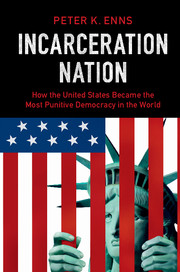2 - A forgiving or a punitive public?
Published online by Cambridge University Press: 05 March 2016
Summary
The networks are in business to give people exactly what they want.
Steve Jobs (1996)Even casual television viewers know that the networks devote an impressive amount of programming to criminals and law enforcement. In fact, one might reasonably conclude that the US public has an almost insatiable appetite for stories about crime and punishment. In 2010, seven of the twenty most watched television shows were crime dramas. Viewers can also choose among a host of other popular crime shows that failed to crack the top twenty, including Blue Bloods, Bones, The Closer, Cold Case, Without a Trace, and the various Law & Order series. The “if it bleeds, it leads” nature of most news reporting on crime (e.g., Pollak and Kubrin 2007) and reality series like Cops, America's Hardest Prisons, and Inside American Jail add to the criminal justice viewing options.
Many scholars have drawn a link between media depictions of crime and public opinion. Yet, despite these media portrayals and television viewers' apparent interest in crime and punishment, the public's attitudes toward criminal justice policy are not well understood. In fact, scholars have reached disparate conclusions regarding the public's punitiveness. One view maintains that the American public has consistently held punitive attitudes. As Zimring and Johnson (2006, p. 266) conclude, “Public hostility toward criminals has been a consistent theme in this country for a long time.” At the other extreme, scholars have referred to the “myth” of punitiveness (e.g., Matthews 2005; Roberts 1997, p. 250).
This chapter makes several contributions to our understanding of the public's attitudes toward crime and punishment. First, I demonstrate how different measurement strategies have led to these vastly different conclusions about the public's punitiveness (or lack thereof). I then build on classic research by V. O. Key (1961) to argue that if we want to understand the relationship between the public's policy preferences and government outputs, we must measure over-time change in the public's preferences. While this is a general argument, it holds particularly large implications for the study of the public's criminal justice attitudes. By focusing on opinion change, we see that it is not only possible to generate and validate a measure of the public's punitiveness, but this punitiveness has moved in systematic and meaningful ways during the past sixty years.
- Type
- Chapter
- Information
- Incarceration NationHow the United States Became the Most Punitive Democracy in the World, pp. 19 - 48Publisher: Cambridge University PressPrint publication year: 2016

